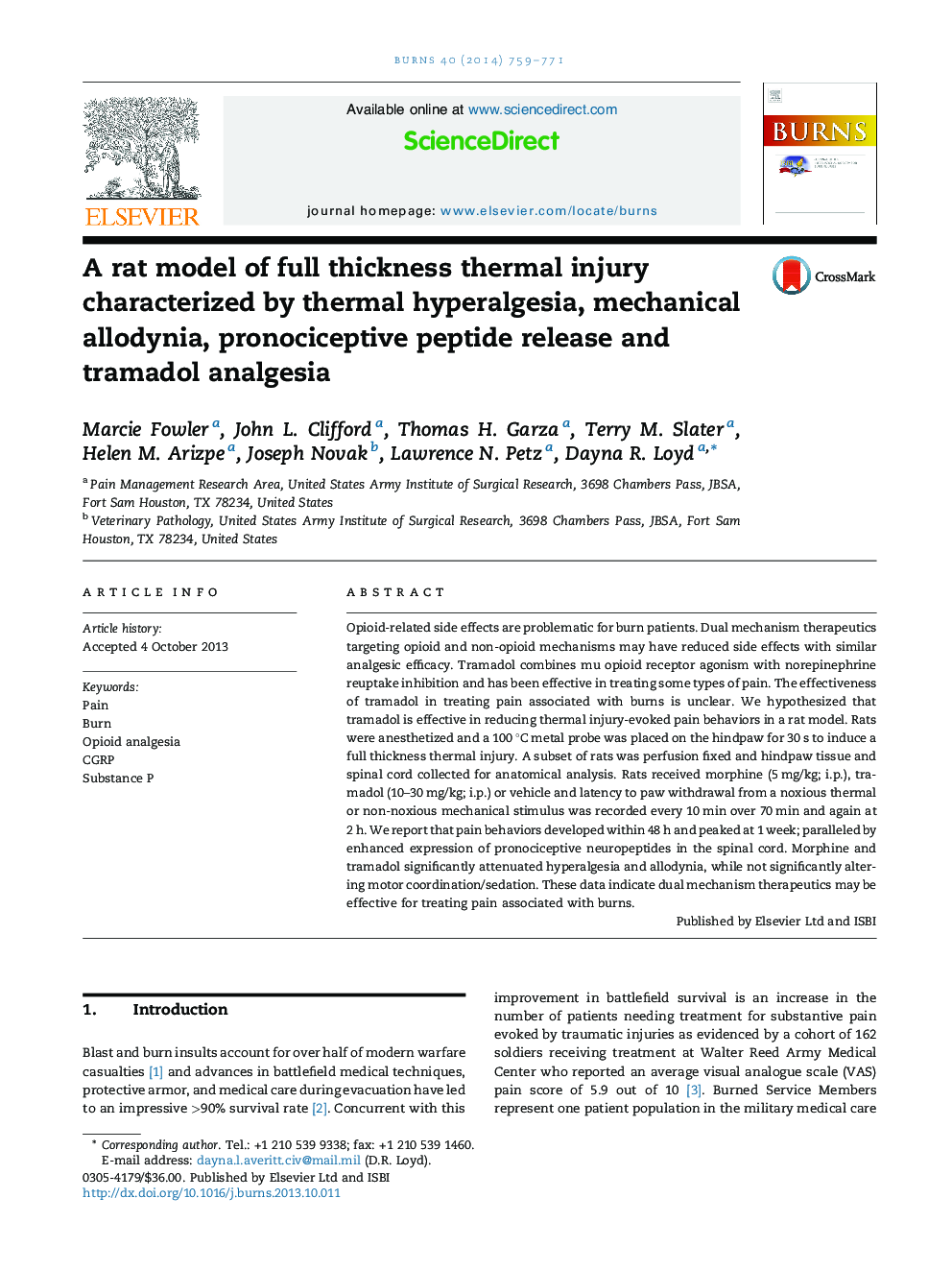| Article ID | Journal | Published Year | Pages | File Type |
|---|---|---|---|---|
| 3104506 | Burns | 2014 | 13 Pages |
Opioid-related side effects are problematic for burn patients. Dual mechanism therapeutics targeting opioid and non-opioid mechanisms may have reduced side effects with similar analgesic efficacy. Tramadol combines mu opioid receptor agonism with norepinephrine reuptake inhibition and has been effective in treating some types of pain. The effectiveness of tramadol in treating pain associated with burns is unclear. We hypothesized that tramadol is effective in reducing thermal injury-evoked pain behaviors in a rat model. Rats were anesthetized and a 100 °C metal probe was placed on the hindpaw for 30 s to induce a full thickness thermal injury. A subset of rats was perfusion fixed and hindpaw tissue and spinal cord collected for anatomical analysis. Rats received morphine (5 mg/kg; i.p.), tramadol (10–30 mg/kg; i.p.) or vehicle and latency to paw withdrawal from a noxious thermal or non-noxious mechanical stimulus was recorded every 10 min over 70 min and again at 2 h. We report that pain behaviors developed within 48 h and peaked at 1 week; paralleled by enhanced expression of pronociceptive neuropeptides in the spinal cord. Morphine and tramadol significantly attenuated hyperalgesia and allodynia, while not significantly altering motor coordination/sedation. These data indicate dual mechanism therapeutics may be effective for treating pain associated with burns.
